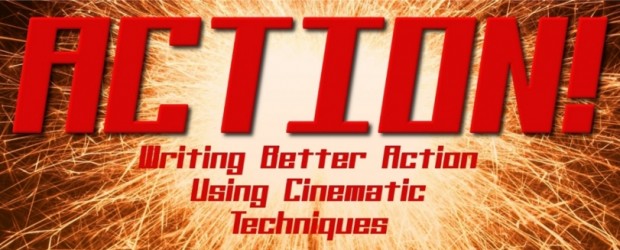The Battle
or, “War is Hell!”
The Battle is, in my opinion, the hardest type of action scene to write well. When you have to manage huge groups of people, of which your characters are a part, it’s a tricky process to keep them from getting lost amid all the action.
Dealing with large-scale combat requires a lot of planning on an author’s part. Most authors want their hero or heroes to be instrumental parts of the battle. That means they must be involved in whatever group is performing the penultimate act. For example: your heroes may be a unit of soldiers in World War II who have to destroy a German machine gun nest so the emergency supplies can advance. There may be several units involved in the combat, but the author needs to focus on what the heroes are doing.
When planning your battle sequence, after you’ve divided up your armies into groups and missions, determine what the important plot points in the battle are. If you need certain events to happen at certain times, plug them into your battle timeline and write from point to point, keeping the flow of action centered on your heroes.
Do not try to describe every single Stunt in a full-scale battle. By creating a battle, you’ve already established there is a tremendous amount of action going on all around the characters, and the readers don’t need to be told what Soldier #38 is doing when he’s a thousand feet away from the heroes. If what he’s doing is vitally important to the plot, you should have one of your heroes do it instead.
It’s easy to get caught up in the grand, sweeping events of combat and lose your characters. Think of it as the difference between a wide-angle panoramic camera shot and a closeup in film. The panoramic shot shows everything happening, but details get lost. You may see great blasts of magic razing down troops, siege engines moving along the ground, buildings shattering. But where are your characters? Which of those tiny figures running around are the ones you’ve been writing about? Remember, your story is still about people, not events, and if you succumb to the temptation to show off the scale of your epic battles without tempering them with closeup shots, you will lose your reader’s interest. On the other hand, if you stick solely with closeup camera angles, keeping the narrative focused only on the heroes, you may lose the sense of scale. Try to strike a good balance between them, say panoramic shots used early to establish the scene, and then lots of closeups on the heroes afterward.
Things happen in a battle which are independent of the heroes’ actions. Some of these things may be the result of their actions, and some may change their actions. In the example above of the World War II unit, their destruction of the machine gun nest will allow supply units to start crossing a bridge, but now they’ll be expected to provide covering fire. On the other hand, German tanks may roll in at that moment and the machine gun nest isn’t the strategic point that it had been. Make sure your heroes adapt to the changing circumstances in a battle. Remember that the things which happen elsewhere in a battle may have important or disastrous effects on your heroes, even if they don’t directly witness them.
